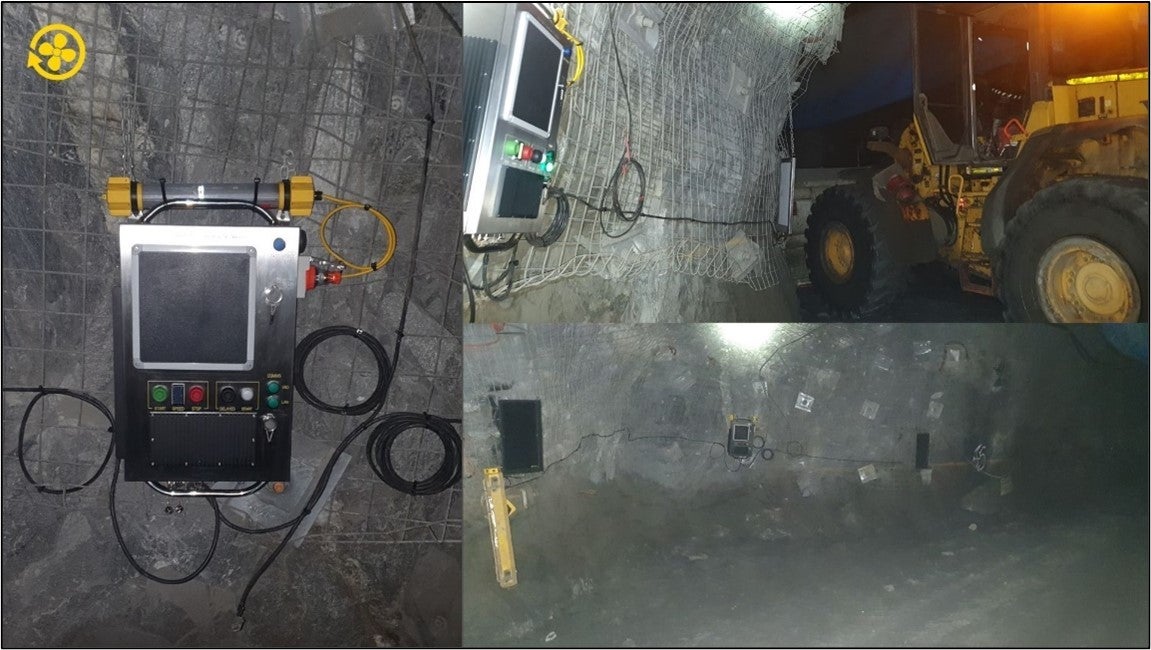
The majority of underground mining vehicles in use today are powered by diesel motors. Forced air ventilation is required to remove diesel exhaust, blast gases and to reduce the ambient temperature for underground operators.
The common ventilation configuration for underground mines is the use of one or more primary fans generally located above the surface that draw fresh air into the mine down the decline; combined with several secondary fans that force fresh air into the working face of blind headings.
The annual energy cost of each secondary fan is substantial, with the cost of operating each fan much more than the purchase price of the fan. Some companies have attempted to reduce their energy cost via the use of timers, written procedures or a mine controller. Ventilation on demand is proving to be a superior solution.
Incremental Ventilation on Demand (IVOD) is achieved by identifying the entry points into a ventilation zone. A Smart-VOD zone unit is installed at the entry point to the ventilation zone and traffic entering is monitored. The air required in the ventilation zone is calculated based on the vehicles in the ventilation zone. Energy savings can be realised in a single ventilation zone; though there are added benefits as more ventilation-on-demand zones are established.
Radio-frequency identification (RFID) tags are attached to vehicles to track movements. The RFID tags allow real-time identification of vehicle movement. A Variable speed drive (VSD) allows real-time control of the fan speed and ventilation flow rates.
The Smart-VOD Zone Unit is the hardware that brings everything together utilising software for autonomous control of fan speed. The Smart-VOD zone unit can operate autonomously and does not require continuous network connectivity. However, when network connectivity is available, further features are available:
Each Zone Unit advises other Zone Units of vehicle sightings; allowing an ensemble of Zone Units to track vehicle movement accurately.
Coordination of fan control with other Zone Units and primary fans at a site during clearance of blast gases.
Reports on vehicles in each ventilation zone and the corresponding ventilation flow; to demonstrate compliance with legislation ventilation standards.
This incremental approach to ventilation on demand is proving to be easier to implement than a whole-of-mine ventilation-on-demand system and is applicable to smaller underground mining operations.
IVOD drives significant energy and cost savings; as these savings are realised by the operator they can be used to expand ventilation-on-demand throughout the mine. Driving further savings and efficiency.
Wear and tear of ventilation components is reduced when the fan speed is gradually adjusted. Vent bags and fans receive less wear and can expect to be in service for longer.
Ventilation-on-Demand can accelerate the clearance of blast gases, allowing an expediated return to mining after a blast; this may bring forward the re-entry allowing for more extraction.
Each ventilation zone needs adequate ventilation capacity to support peak use. However, its unlikely that every ventilation zone in a mine requires its peak use at the same time. Smart-VOD spreads the ventilation across the mine as required and can be used to cap total ventilation energy to match generation capacity.
Additionally, IVOD contributes to environmental sustainability by minimising waste and emissions, aligning with the mining industry’s growing focus on sustainable practices.
